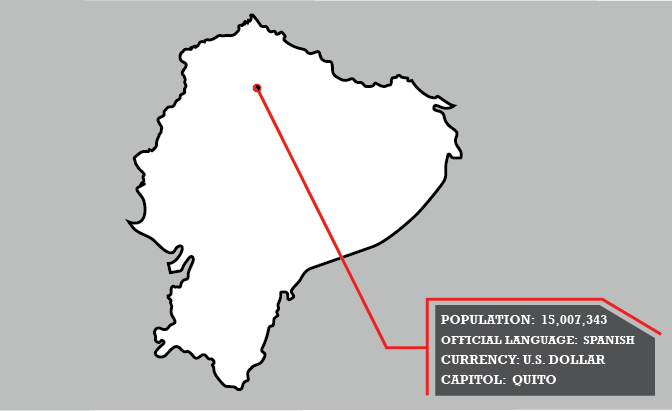Ecuador

COUNTRY PROFILE
Ecuador's cultural heritage is as impressive as its physical beauty. The nation was part of the Inca empire until it fell to the Spanish conquistadors in 1534. In that same year, Inca General Ruminahui razed Quito to keep it from being captured by the invaders. Refounded as the colonial capital, Quito became famous in the 17th and 18th centuries as a center for the arts—there are no finer examples of Spanish colonial architecture, sculpture and paintings than those produced in Ecuador at that time.
Like the rest of South America, Ecuador underwent a period of turmoil as it attempted to cast off Spanish rule in the early 1800s. Independence was won by the armies of Simon Bolivar, with the key battles in Ecuador being won by Antonio Jose de Sucre, one of Bolivar's field marshals. (Ecuador's former currency was named in honor of Sucre.) After forming an unsuccessful federation with Colombia and Venezuela, Ecuador became an independent nation in 1830 and began the long, difficult road toward political stability. During this period, there wasn't much job security in being leader of Ecuador. In the first 95 years of independence (1822-1917), Ecuador had 40 presidents, dictators and juntas, and from 1925 to 1948, none of the 22 presidents or chiefs of state completed his term.
In 1942, as the result of a war with Peru, Ecuador lost a significant portion of its Amazon Basin territory. After numerous battles, a peace was finally negotiated in late 1998 that has eased tensions along the border. Ecuador's bad luck with its leaders continued, however—it holds the dismal record of the country with the most exiled ex-presidents.
Despite high oil prices since 2000 and abandoning their currency for the U.S. dollar, the majority of Ecuadoreans remain in poverty. Huge numbers have emigrated—chiefly to the U.S. and Spain. Revenues sent home from abroad now constitute the country's third- or fourth-highest foreign-exchange earner (along with bananas, oil and tourism).
In the smaller towns and villages of the Sierra, you'll see the descendants of Inca peoples, many of whom wear distinctive clothing and hats that identify them as residents of a particular area.
DATES
Call for custom dates.
AGE REQUIRMENT
13 and up



